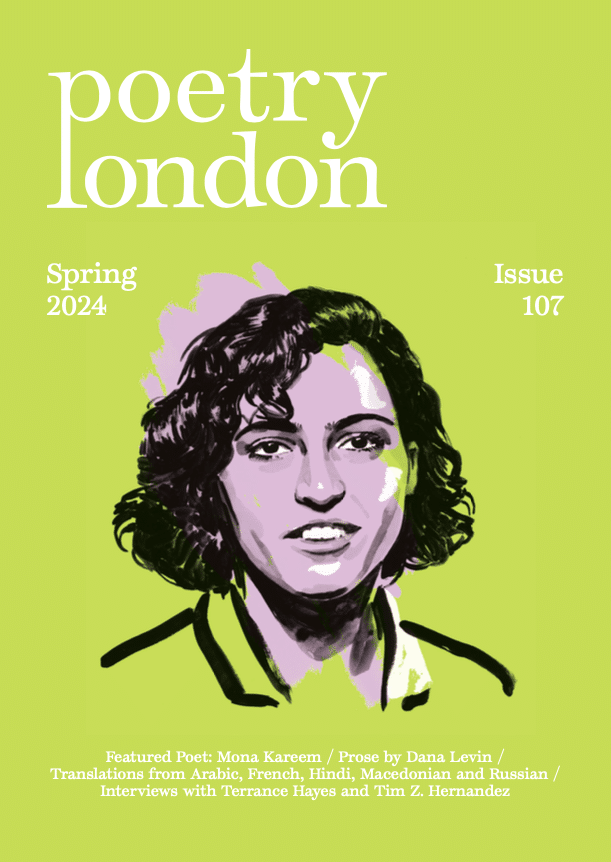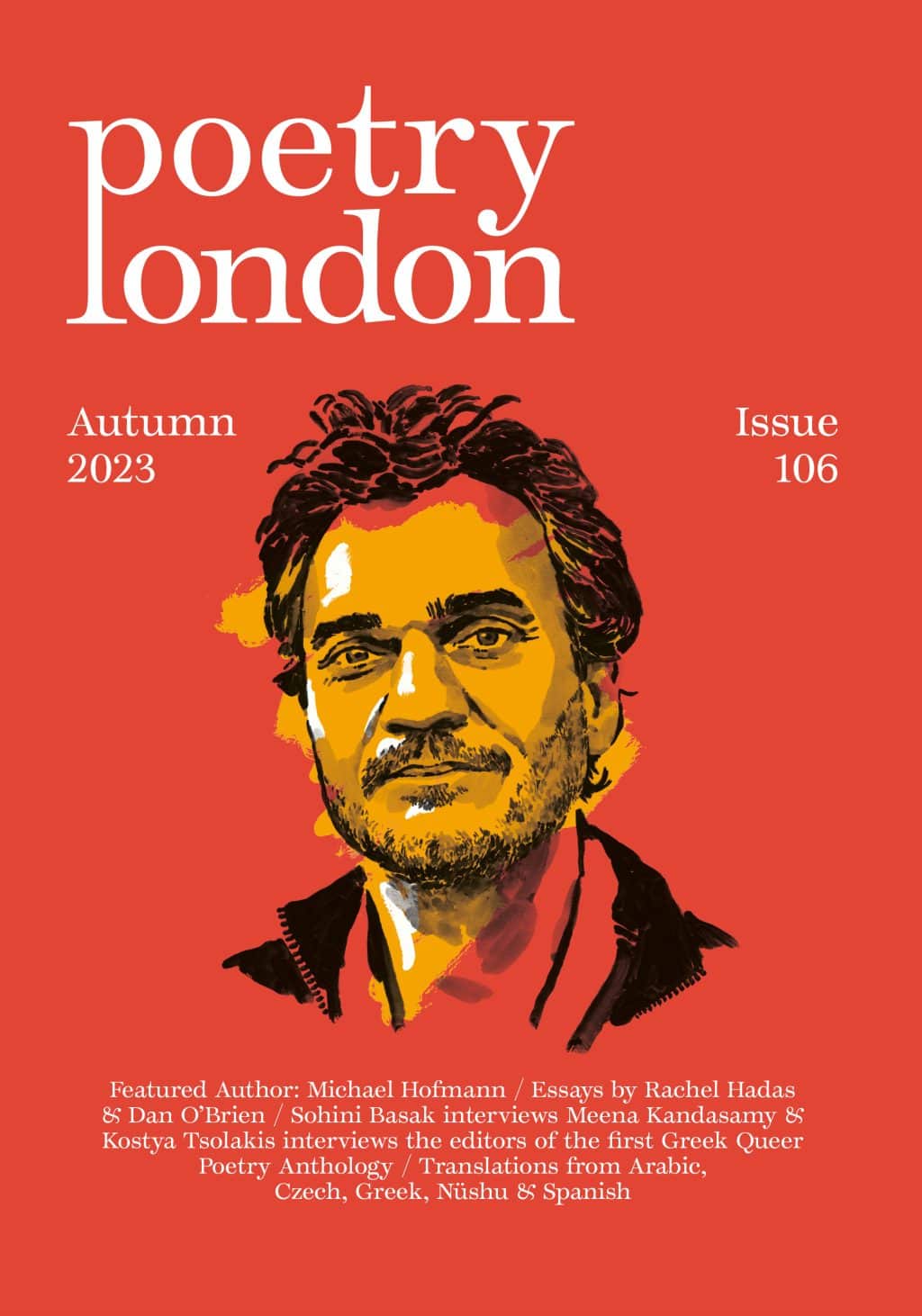Averse Miscellany: Let There Be Bad Poetry!
Camille Ralphs
In her third instalment of her exclusive column for Poetry London, Camille Ralphs takes a riotously funny look at a ninety-year-old compendium of bad poetry and considers what separates ‘bad verse’ from ‘good bad verse’.
Is it possible for us to agree that not all bad poems are bad in the same way? D. B. Wyndham Lewis and Charles Lee, the editors of The Stuffed Owl: An Anthology of Bad Verse (1930), note that there’s a vital difference between bad verse and “good bad verse”. The former is not serious enough to warrant much discussion, while the latter, the subject of their anthology and of this piece, “is innocent of faults of craftsmanship”. It’s characterized instead by qualities including bathos (“the more eminent the poet, the more imposing the glissade, the more shattering the bump below”), humourlessness, patriotic cant, and: “those things connoted by poverty of the imagination, sentimentality, banality, the prosaic… anaemia, obstipation, or constipation of the poetic faculty; inability to hold the key of inspiration; insufficiency of emotional content for metrical form.” (Entries in the index include “Bards, dead, common objects of the sea shore”, “Great Exhibition, the, its contents compendiously catalogued” and “Wet-nurses… male parents useless as”.) We might add that some poets simply don’t trust their readers. Edward Edwin Foot, a prime example of nominative determinism, excessively and capriciously employs footnotes. To one opening line, “The captain scans the ruffled zone”, he appends this note: “A figurative expression, intended by the Author to signify the horizon”.
The editors will not risk offending their contemporaries – our living poets, as we know, are touchy characters. They open with Abraham Cowley (1618–67) – on the grounds that Donne’s and Crashaw’s “general obscurity and cragginess retard the slide into the depths” and that “when [Elizabethans and medievals] are bad they are tiresome to a degree” – and close with Tennyson (1809–92), who also features in the “Hors d’oeuvres” section with the cack-handedly cavalier pentameter “He suddenly dropt dead of heart-disease”.
I’ve begun with Cowley once before, starting the first piece in this series by quoting Pope’s “Imitations of Horace”: “Who now reads Cowley?”, he asks, before observing that “if he pleases yet, / His moral pleases, not his pointed wit”. Pope also indirectly ribs him, or at least improves him to the point of making him unrecognisable, in the Dunciad: the lines “Here she beholds the Chaos dark and deep, / Where nameless Somethings in their causes sleep” are loosely modelled on lines from Cowley’s Davideis (“When their vast count the mother-waters keep; / And, undisturb’d by moons, in silence sleep”) via Samuel Garth’s mock-epic The Dispensary.
The extract from the Davideis here entitled “An Archangel’s Toilet” is unreadable because it’s dull and overly cosmetic: to behold perfection breeds resentment, and to see perfection preen itself – a pointless, paradoxical concept anyway – is enough to drive anyone into the arms of the Devil’s party. The extract from “Ode upon Dr Harvey”, on the other hand, is hardly “innocent of faults of craftsmanship”, showcasing shockingly circumlocuitous verse (“When Harvey’s violent passion she did see, / began to tremble and to flee, / Took sanctuary, like Daphne, in a tree”). There are some lines worth reading:
But as the deer long-hunted takes a flood, She leapt at last into the winding streams of blood; Of man’s Meander all the purple reaches made, Till at the heart she stayed
But these too feel bathetic, not to mention medically questionable (Cowley did become a doctor later in his life, but not a practising physician), on a quick look at their theme: Dr Harvey discovered the circulation of blood, but here is depicted chasing Nature around, and indeed into, the mulberry bush: “into the bark and root he after her did go”. Cowley was, according to the editors, “the last poet of the Metaphysical school”; but surely the real bearer of that torch must be Marvell (1621–78), or even Vaughan (1621–95)? Although he was the source of much of Samuel Johnson’s doubt about that group (a large part of his Life of Cowley’s a critique of Donne, and of the tendency to use or overuse conceits; Cowley “unhappily adopted that which was predominant”, taking what he got from Donne too far, apparently), his work’s a segue into the Augustan style, based on the excerpts here – had he been born two decades later, under influences more agreeable to his concerns, we might speak more of him today. It is a shame that some of his most over-Donned verse is not represented in The Stuffed Owl, though. His presentation of a lover’s heart as a grenade deserves it:
Woe to her stubborn heart, if once mine come Into the self-same room; ’Twill tear and blow up all within, Like a grenado shot into a magazine. Then shall love keep the ashes and torn parts, Of both our broken hearts; Shall out of both one new one make; From hers th’ allay, from mine the metal take.
A poet more clearly lambasted in the Dunciad is Colley Cibber (1671–1757), whose role in successive versions of the poem grew more negative as tensions grew between Cibber and Pope; eventually, Cibber was crowned the King of Dunces and son of the goddess Dulness. Pope was only one of many who gave him a kicking (in 1740, Henry Fielding wrote a satire in which Cibber’s tried for murder of the English language). But how bad was Cibber, Poet Laureate from 1730?
His writing has some fatal flaws, it’s true: what is extracted here is anodyne and tacky, built to bolster up the monarchy. His “Birthday Ode” of 1732 goes to great lengths to emphasize George II’s divinity, beginning “Let there be light!” before claiming that creation’s days fortuitously culminated in one crowned and crowning moment: “The best of monarchs shall be born!” More interesting is his air on German place-names (from the “Birthday Ode” of 1743). It’s an homage to his father’s Hanoverian heritage, and one more attempt to gratify the monarch; it is also, in its latter half, not unconvincing:
Tho’ rough Seligenstadt The harmony defeat, Tho’ Klein-Ostein the verse confound; Yet, in the joyful strain, Aschaffenburg or Dettingen, Shall charm the ear they seem to wound.
His efforts to cram “Seligenstadt”, “Klein-Ostein”, “Aschaffenburg” and “Dettingen” into six rhymed lines may only make the modern reader think of Toto’s doomed attempt to get “Kilimanjaro” and “Serengeti” into one short line of “Africa”. But “Aschaffenberg” sounds pretty as a seashell when it’s followed by “Shall charm”, and the rhyming of “joyful strain” with “Dettingen” feels nowhere near as strained as it might.
More disconcerting is James Grainger (1721–67), “another”, in the editors’ words, “of the eighteenth-century practitioners of viscera and verse” (cf. John Armstrong’s Art of Preserving Health and Richard Blackmore’s Critical Dissertation on the Spleen). But his most ridiculous work (“Bryan and Pereene”) is his least characteristic. Written in a sprightly ballad metre, his portrayal of a youth being halved by a deus-ex-machina shark makes Jaws look slow-burn and profound:
Then through the white surf did she haste To clasp her lovely swain; When, ah! a shark bit through his waist; His heart’s blood dy’d the main! He shriek’d! his half sprung from the wave, Streaming with purple gore, And soon it found a living grave, And, ah! was seen no more.
Grainger’s more usual proclivities are nauseating. The Sugar-Cane (1764) was mocked by Johnson (“What could he make of a sugar-cane? One might as well write The Parsley-Bed, a Poem or The Cabbage Garden, a Poem”, he said to Boswell), and it is easy to see why. An extract from Book II wrinkles the reader’s nose:
... Though well-manur’d; A richness though thy fields from Nature boast; Though seasons pour; this pestilence invades.
Thereafter, “small eggs appear / dire fraught with reptile life… / They burst their filmy gaol, and crawl abroad, / Bugs of uncommon shape”. His application to the Muse in Book III typifies his faults. “Of composts shall the Muse disdain to sing?” (yes, preferably, unless there is a damn good reason to do otherwise). “Never, ah! never, be asham’d to tread / Thy dung-heaps.” The editors note elsewhere that “Vergil wrote poetically of sheep-scab and manure” – but even scabrous sheep sound fine in Latin, and not much is wickeder in English than a consonantal rhyme of “sing” and “dung”. In our own day, Fiona Benson proves it’s possible to write with verve of sordidness, of cockroach and regurgitate-fed spawn; but Benson doesn’t claim this as a beau ideal – rather, she probes and takes advantage of the reader’s squeamishness. James Grainger’s problem is his wanting to deterge the dirt and claim, quite literally, that his shit does not stink.
Thus far I have largely approved of the editors’ opinions. But one gives me pause: their sending up of Mary Robinson (1758–1800). They write that she was “called by her admirers the English Sappho, [and] derived much of her poetical success from her generous exploitation of personal amours in print”. We could be forgiven for getting the impression that her presence here, and absence elsewhere, maybe, is based less on verse than on her person: Lee and Wyndham Lewis call her “lovely, vain, and fond of exhibition”; she was painted by, among others, Reynolds and Gainsborough.
Her most impressive work is the Petrarchan sonnet sequence Sappho and Phaon (1796), which is far more than a billet-doux or exposé. From her introduction: “OVID and POPE have celebrated the passion of Sappho for Phaon; but their portraits, however beautifully finished, are replete with shades, tending rather to depreciate than to adorn the Grecian poetess”. This is a work of ambition. But two of these sonnets appear in The Stuffed Owl.
One, given the title “The Vest of Myrtle” here, carries echoes of Ben Jonson’s “Still To Be Neat, Still To Be Dressed”, from its theme of preferring informal adornment to its use of “drest” as an end-rhyme in the sestet: “Love scorns the nymph in wanton trappings drest; / And charms the most concealed, are doubly graced”. That phrase itself is doubly graced: “charms” seems to be a verb at the beginning of the second line, empowering the most concealed, but by the end has turned into the object of the sentence. Similar ambiguities unfurl in the other sonnet. Arguably, Robinson makes little of the binary nature of the sonnet form, each volta either overobvious or underemphasized (Keats uses the volta far more fruitfully in his own Petrarchan sonnets); and yes, there’s a vacuous forcedness to such phrases as “Not idly gay, but elegantly chaste!”. And Robinson’s description – imagistic and legato – sometimes feels like visual-verbal noodling for its own sake. But I do not find these sonnets to be bad verse, even “good bad verse”.
Another slip: the cunningly unnamed “voice from the New World” mocked by Lee and Wyndham Lewis in their introduction is identifiable today as Gertrude Stein. In fairness, they “admit that we may be wrong”. But the misplaced confidence of their original assertion is enough warning to critics writing now.
Camille Ralphs has two published pamphlets, Malkin: An ellegy in 14 spels (The Emma Press, 2015), which was shortlisted for the Michael Marks Poetry Award, and uplifts & chains (If A Leaf Falls Press, 2020). She is poetry editor at the Times Literary Supplement.

